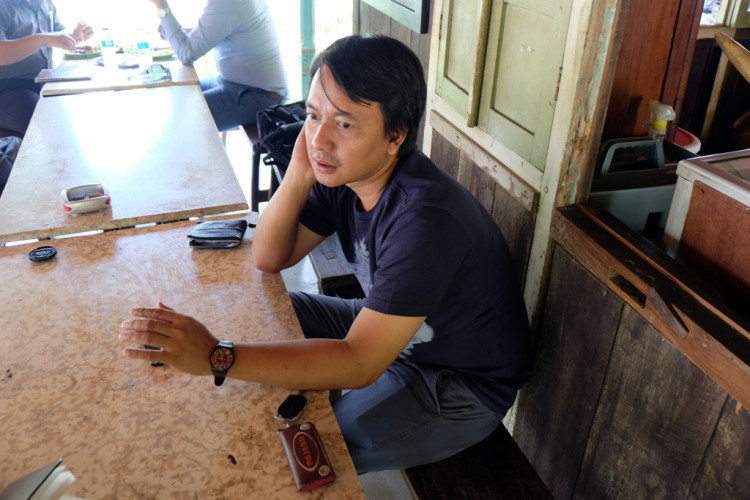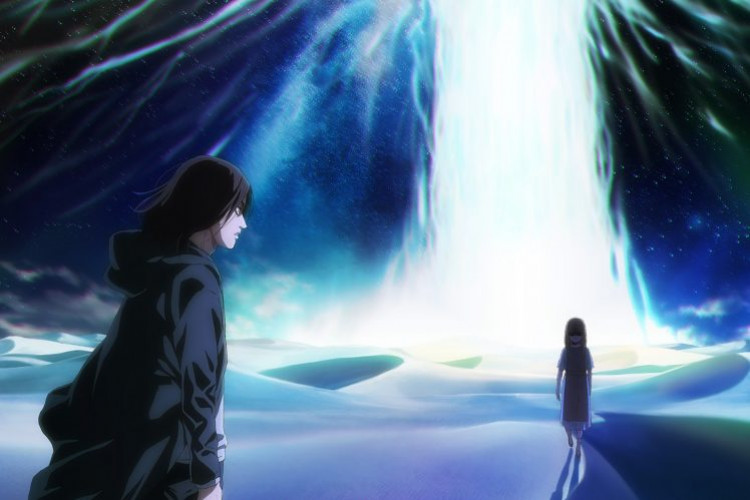Examining Life Through Films with Edwin
Mariati Galatio (M) Talks to Babibutafilm's Director Edwin (E).
by Ken Jenie
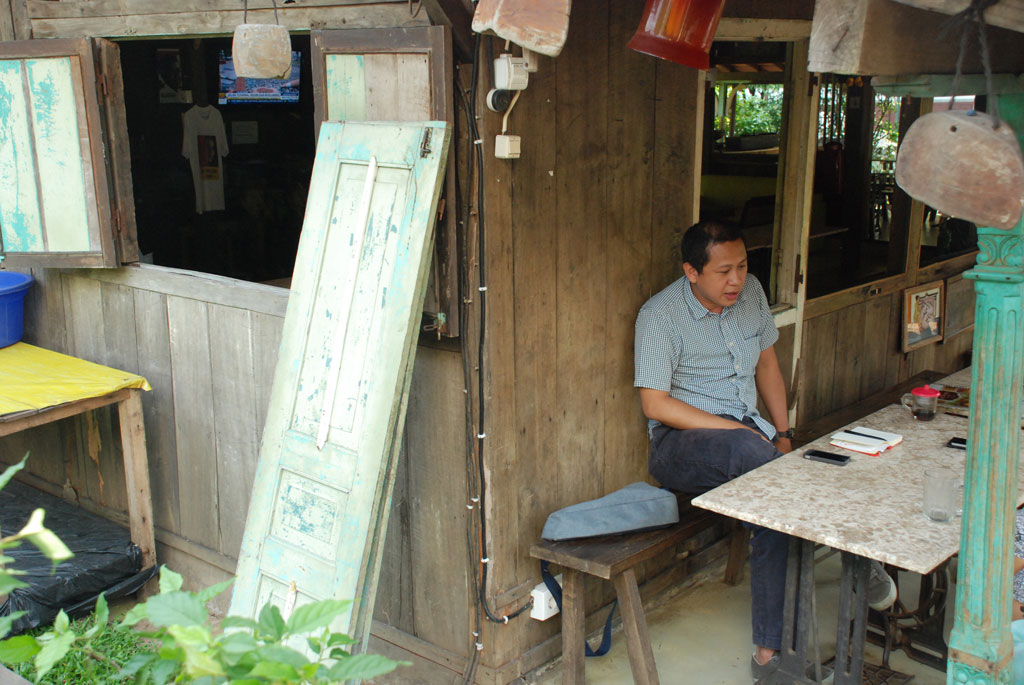
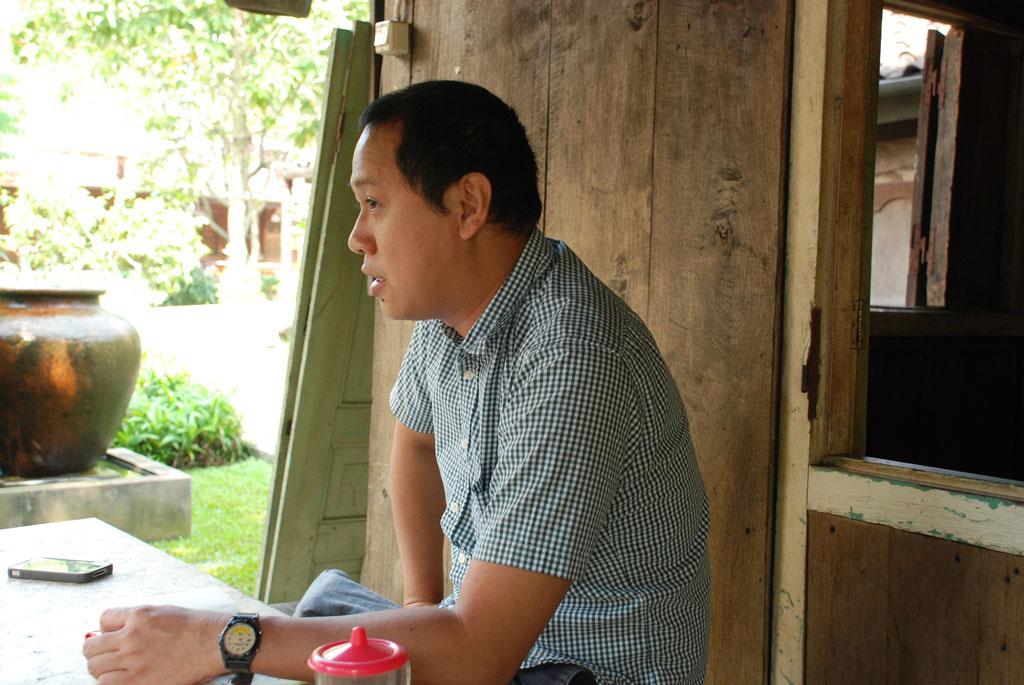
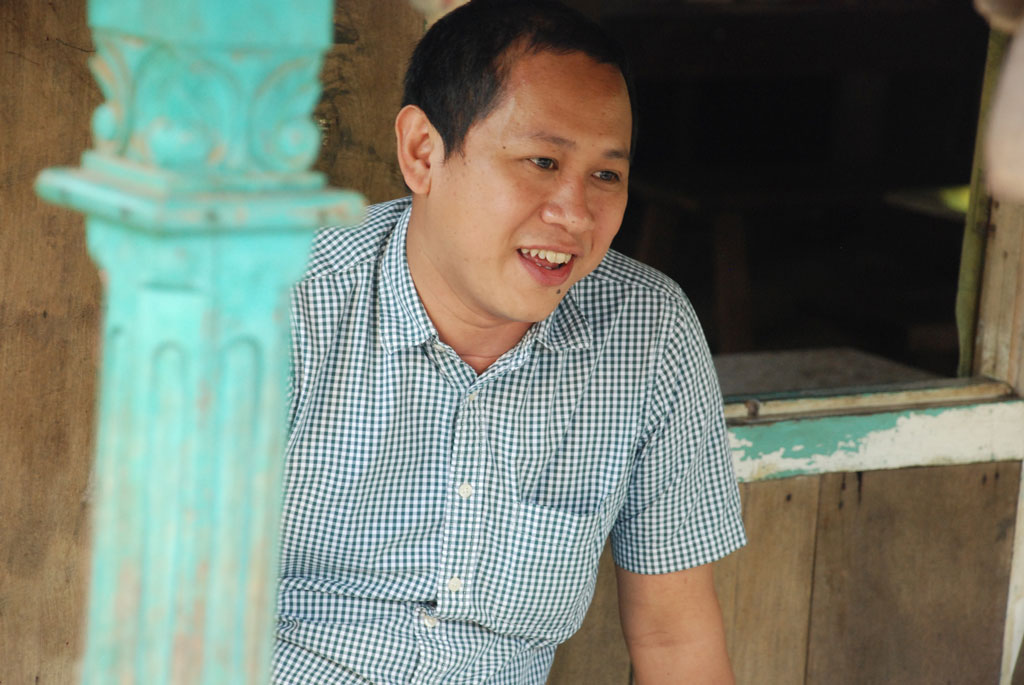
M
Could you tell us about how you became interested in films and when did you decide to pursue this field full time?
E
In terms of interest… when I was a child, I enjoyed watching films on theaters and video, which consisted of the standards at the time – Hollywood films, Kung Fu films, Voltus V, Megaloman etc. I never imagined that I was to make films.
I was raised in Surabaya, and like many, I didn’t particularly know what I wanted to do after high school. The usual suggestions such as working in sectors like economy, engineering, medicine – I was not interested and my grades didn’t allow me to take these subjects anyway (laughs). I started looking for fields to study that would interest me. Petra University had just started a three-year graphic design diploma program whose curriculum was geared towards being a technician. The program interested me because it included illustration, animation – it seemed exciting – so I signed up.
During my second year there (1998) I saw a screening of Garin Nugroho’s “Daun Di Atas Bantal” He was on television often at the time, and I saw an interview where he said he studied film in Institut Kesenian Jakarta (IKJ) – prior to this interview I didn’t know there was a school where you can study film. The day after I watched him speak, I bought a ticket and went to Jakarta to check out IKJ. After short visit, I decided that I was going to continue my studies there after I was finished with graphic design.
M
So you went to IKJ afterwards. What did you study there?
E
I wanted to concentrate on animation, but it wasn’t as I expected. IKJ’s animation program was geared towards a more artistic, experimental, mode of animation. I enjoyed it, but as it wasn’t what I wanted to study [in animation] so I changed to live action filmmaking. I studied for four years –making films for class.
M
So you already started making films in school?
E
Yes, but the films I made in school I wouldn’t consider complete films – they were, more or less, practice. The films I consider complete were made outside of the school’s program – I made them with friends during the school break with IKJ’s equipment. “A Very Slow Breakfast” was our first short film.
M
What year was that?
E
2001.
M
What moment made you realize that you were going to delve fully into filmmaking?
E
I consider short films to be experiments, and having fun with friends – there is spontaneity when creating them. What I would consider as the serious decision was creating a full-length feature film, which was “Babi Buta Yang Ingin Terbang” (The Blind Pig Who Wants To Fly), because it took stronger stamina and energy to create it. As the decision to create the film… it really was because of my friends’ support.
After creating a series of short films, my friends suggested we make a feature film. I had a collection of stories/situations I thought up – I didn’t know what to do with them. After many discussions, we concluded that we can perhaps talk about identity – what is the condition of being Chinese in Indonesia. Some of the people involved – myself, Dede [Meiske Taurisia], Panca [Herman Kumala], Ladya [Ladya Cheryl] – experienced similar problems: We were Chinese Indonesians who were relatively ignorant but wanted to know about the conditions in our country. We thought perhaps by creating this film, we can address and perhaps know a bit more about ourselves – this was the force that made us decide to create this film.
M
When did you start the film?
E
The production was finished in 2008 so we started around 2005-2006.
M
So “Babi Buta Yang Ingin Terbang” was the moment you knew you had to be committed to filmmaking.
E
Yes. When making short films you can be spontaneous – we would come up with ideas quickly, draw a rough storyboard, and make the film – it’s a relatively short process. This spontaneity is one of the most interesting aspect of making short film. For a full-length, you need to be committed to the process and planning – from the discussion, production, to the finished product.
M
You often work with the same people when creating your films. What is the reason, advantage, and disadvantage to this?
E
A film is created by a group of people, and each person’s contribution, I hope, has a personal touch that adds a human element to the creating process. I want us to grow together – like a family. It has been 12 years since “A Very Slow Breakfast”, “Dayang Sumbi”, and we have all grown as people and our relationships have grown as well – that is an asset to making a film.
I believe the advantage, aside from what was mentioned before, is trust – the environment is comfortable and personal.
As for the disadvantage… I don’t really know. Perhaps there is an element of boredom. Being human, when we first started in our early twenties, there was a lot of growth and excitement in our personal lives – jobs, marriage, etc. Perhaps this dynamic has slowed down because our lives are a bit more stable now.
M
While you studied filmmaking, was there a certain style of filmmaking you were drawn towards?
E
Style-wise I don’t believe there was anything in particular. Growing up, I watched mostly Hollywood films, and when I was in IKJ, we had to watch everything from French New Wave, experimental, avant garde, new realism. There are so many films that it is a bit difficult to pinpoint what style I was drawn towards.
M
Any specific filmmakers that you particularly enjoyed?
E
Some filmmakers that I really enjoyed in the beginning was Akira Kurosawa and Ozu. Later on, I became interested in Asian cinema – I was curious about what was going on in Asia. I ended up watching Tsai Ming Liang, Kim Ki Duk, etc.
M
I love Tsai Ming Liang.
E
The first Tsai Ming Liang film I watched was “The Hole” in JiFFest, then “What Time Is It There”. I was pleasantly surprised by the film and his use of tempo.
Asian cinema is closer to our reality. For example, the use of weapons – watching a Hollywood film with guns and an Hong Kong film with guns – we perhaps have never seen a gun in our lives, but watching a Hong Kong film makes the situation feel much more relatable.
M
One of your feature films, “Postcards From the Zoo,” uses a series of non-actors (particularly the zookeepers) – was this perhaps influenced by Tsai Ming Liang, who is known to cast non actors in his films as well?
E
No, I don’t believe his films has influenced me to such a technical degree. The casting of non-actors is more of a necessity, particularly for the more specialized role such as the zookeepers. Having actors to do this role wouldn’t be believable and simply unpleasant to watch.
Also, I believe that a film shouldn’t be sterile from reality. What is in the frame has to have an element of reality – it cannot all be created. The goal of films is to challenge or respond to reality. Putting a professional actor in a market, where all these different elements are uncontrollable – it creates an interesting cinematic energy.
Lastly, creating films give you the opportunity to document the changes happening all around you. Sure, a film can be fictional, but in a place where cities change so quickly – our country isn’t too concerned with preservation – a film can capture the evolution of our real-life surroundings.
M
How do you create a dynamic between the professional and the non-actors?
E
There is a rehearsal, but it’s more of having a conversation than a practice session – getting to know each other. You can consider them as two different species from different planets, they meet up and look for a point of comfort, and understanding.
M
In an Interview with FilmIndonesia.or.id you said “Postcards From the Zoo” was inspired by your experiences in and observations of Ragunan Zoo, which includes the displacement as well as the voyeurism between visitors and animals. Can you describe how you developed the story of the protagonist, Lana, from your interest in Ragunan Zoo?
E
This film is very much inspired by Ragunan Zoo as a location, and occurrences I’ve seen during my visits. I have seen a child get lost in the zoo – she was found, of course- but for half an hour she was wandering the zoo lost and confused. Questions and scenarios started popping in my head – what if she was never found? What if her family actually meant to lose her? – these types of questions and exploration are the basis of Lana’s story – if the child wasn’t found, then her family must have thrown her away, why was she left in the zoo? What will she do next?
We decided to explore that feeling of loss and abandonment, and this abstract shapes Lana’s character. She watches the zoo’s visitors, which is another concept we wanted to explore in the film. The film is also about how people watch each other and how people would like to be seen by other people.
M
There were times where I felt you drew parallels between the animals and the characters.
E
The film addresses displacement. When you think about our displacement, then people aren’t too different from the animals we find at the zoo. The giraffe, for example – Jakarta and the zoo isn’t in its habitat, it isn’t a tropical animal, and yet it is here – there is something odd and awkward about a giraffe being in this environment, even if they were bred here.
This displacement brings up questions about our [humanity’s] own experience. There are individuals who do not feel comfortable where they are – who do not feel comfortable in Jakarta’s metropolis. This theme of discomfort, having your feet planted in a place where you feel awkward, is something we wanted to address.
M
The animals’, though, do not have a choice like we humans do.
E
It isn’t quite that literal. Looking at the larger picture – as citizens, our choices are limited. Or we aren’t accustomed to be given choices. During the Soeharto-era we didn’t even have a freedom of choice – we could only follow orders.
M
Your first feature film, “Babi Buta Yang Ingin Terbang,” the subject that was addressed is the Chinese Indonesian experience in Indonesia, specifically in Surabaya. Is the film a personal reflection of your own personal experience and how would you describe the race relations here in Indonesia?
E
My experiences are expressed, but not literal manner through the film. Like I mentioned before, “Babi Buta Yang Ingin Terbang” is a product of discussion by people involved in making the film – as in there are many different individual problems we face as Chinese Indonesians. At the very least, I am familiar with the characters in the film – I see friends, family, acquaintance and myself in the characters portrayed.
To be frank, even from conception, we did not know exactly what we wanted to express as Chinese Indonesians. We are of today’s generation who do not know much about politics, but wants and needs to know – we want to express our need to know.
M
But an awareness of just being a Chinese Indonesian doesn’t necessarily require you to understand the politics.
E
That we understood while making “Babi Buta Yang Ingin Terbang” – I mean, we obviously knew we were of Chinese descent, but we never described the experience. There were problems as a Chinese Indonesian that we never discussed, some we didn’t even understand that there were problems until we were working on the film. Basic questions of our identities were raised, questions that, most of the time, are forgotten in time – we were trying to remember these questions. A question such as – when we were children, why did we have to cite our race when we took school exams? What constitutes a WNI (Indonesian Citizen) with Pribumi (Native Indonesian)? A Chinese Indonesian is a WNI, while one of Indian descent is Pribumi – what are the criteria? Why are we being discriminated? Is it a product of mutualism? We had a need to address these types of issues, and we did this by making Babi Buta Yang Ingin Terbang.
M
Footage of the 1998 riots were depicted in the film. Did this event also influence Babi Buta?
E
Of course it did. Imagine, an event of the 1998 riot’s proportion happened and we didn’t understand why. It was perhaps different in Jakarta, but the chaos, violence, rape – as someone in Surabaya who didn’t feel like there was any significant racial problem I was met with this incredible reality. The feelings cannot simply be described as anger, the feeling of humiliation was a much more prevalent.
M
Why humiliation?
E
Because we were ignorant of the fact. It brought back memories of being made fun of, of neighborly disputes – things we considered as normal developed into this bomb that exploded in 1998. Feeling so betrayed, lied to, be so ignorant – we must assume responsibility for this ignorance.
M
You also mentioned in the interview with FilmIndonesia.or.id that “Babi Buta Yang Ingin Terbang” started with the image of Ladya Cheryl holding firecrackers in her mouth. How did you develop your story based in this image?
E
In term of images, they just appear and sometimes they linger in your mind. I take notes of images and events that surfaces in my mind and put them together into a composition – it is very much like editing footage.
M
In the film, Stevie Wonder’s song “I Just Called To Say I Love You” was featured prominently throughout. What was the story behind it?
E
I wanted everything in the film to have characters. The pig, the father, the daughter, everything is one-dimensional and comical. The music, in this case, is also the character that can represent the time, the routine, the disturbance, and especially the memory. The song was ubiquitous during my childhood when I had all these questions over my race. Music can create the atmosphere. In this case, I use the song as a common ground for the three generations in the film.
Music can help a film tremendously. It can amplify and add dimension to the film. It should also be able to stand by itself. I usually put music in scenes that have been repeated so the audience can appreciate the music with the help of the visual instead of the other way around.
M
What was the research that was put into your new film, “Hortus”, and why chose a sexually explicit narrative theme? [note: In “Hortus”, two 16 mm films are played side by side simultaneously. One is a collection of archival ethnography footage of Indonesia during Dutch control, the other is a pornography directed by Edwin].
E
It was a research for my next feature film about colonialism in the end of Dutch occupation and beginning of Japanese rule in Indonesia. Colonialism is a piece of world history that our generation don’t know much about because of the government censorship at the time.
When I studied in Netherlands, I had access to all these information of Dutch occupation in public libraries. Colonialism occurred throughout the Industrial Revolution in Europe. Along with that, education and technology were also revolutionized which led to the birth of cinema in the beginning of the 1900s. Of course, the ones with cameras are the people in power. In the Netherlands, the cameramen are usually journalists sent by the government to do ethnography on regions in Indonesia. With colonialism, I see a parallel with pornography in which there is an exploitation by the people with power. Pornography is a form of exploitation so for me, that can be the way to view colonialism. In one of the ethnography footage, you can see the cameraman took a higher angle when filming the women weavers. This, to me, is a form of exploitation. It can happen because the power is in the cameraman. It’s relevant to the modern day. Hence, I decided to play the old footage simultaneously with an actual porn.
M
What was the approach in creating “Hortus”?
E
What was most important is expressing the exploitative qualities of both the pornography and the found footage. Our history is one of exploitation, and the technologies we hold in our hands: cameras, phones, they have exploitative tendencies – they are tools of power.
M
The film, obviously, cannot be screened freely.
E
No, it cannot. It has to be screened like we did [referring to a private screening followed by a discussion done a couple of months prior to this interview] – it is a film that needs to be put into context and discussed.
M
So far, has there been a difference in the reception to your films?
E
I don’t believe there is a huge difference. The only apparent difference is that outside of Indonesia, the audiences are curious because they do not know what Indonesia is like. In Indonesia, we are familiar with the subjects of the films, so a lot of the questions have to do with the technical side. So in terms of understanding, perhaps Indonesia understand better so there is less discussion on the artistic front – which is okay.
M
“Postcards from the Zoo” seems to have a more universal feel. Does the response correspond with the theme?
E
That is true, the questions I’ve received regarding the film inside and outside of Indonesia are similar.
M
It also seems like much of your films are funded from and screened abroad. Is there a particular reason why?
E
It is simply because there are more opportunities to screen films abroad. There is only one major group of movie theatres in Indonesia, XXI. We don’t really have a distribution strategy in Indonesia, XXI decides where it is screened, and once it is screened there, it won’t be picked up by them anymore.
M
There is only one chance to have it on screen here then.
E
Yes. There isn’t longevity. If your film is successful and lucky, you might get it screened on television. Films such as “Postcards From the Zoo” would have been difficult to get on TV because it isn’t a popular movie theater film.
It looks like it is screened more often abroad because there are more opportunities to screen them – there are many countries where we can show the film.
M
And regarding funding?
E
There are International film organizations that help fund first-time and second-time filmmakers. Their funding aims to help kick start the artist’s career. By your third film, you are considered a professional filmmaker so it is more difficult to do so.
M
What is your opinion on Indonesia’s art house cinema and experimental film?
E
Any form of experiment will always be interesting. There are always endeavors by new filmmakers to understand the medium and to communicate in new ways through film.
We [Indonesia] are lucky because we have a healthy group of people who are experimenting. Because there is no greater infrastructure that facilitates the filmmakers, they work in small collective groups that we can put our hopes on.
There are also new medias that are interested in things that are considered ‘alternative’. In films they would be websites such as Cinema Poetica, FilmIndonesia.or – these film blogs create a meaningful dialogue between the film and the audience.
This discourse between the artist and the media is something I really enjoy. We build a relationship with them, and it often becomes a collaboration. We become a community.
M
To end this interview, could you tell us about your projects you are working on? Perhaps we can start with your 17,000 Island project.
E
17,000 Island [17000islandsinteractive.com] is an interactive documentary project. We created a film, uploaded it on the internet, and ask visitors to create their own film from it. Visitors create their own meaning from the footage we took.
The interactive project is a collaboration between myself and a Norwegian filmmaker [Thomas Ostbye] and was funded by The Norwegian Film Fund and the Danish Film Institute. The project was originally commissioned by CPH:DOX [Copenhagen Documentary Festival]. They have a program where they have a Scandinavian director collaborate with an artist outside of Scandinavia, and this is what resulted from that collaboration.
M
As for current work?
E
Babibutafilm and Hivos are working together to create short film program. We are working on three short films with three directors. The subjects will revolve around humanitarian subjects. Hivos’ work revolves around humanitarian work, and they have given us the freedom to explore the subject such as sex, feminism, LGBT, and diversity, through film.
We are also working on a documentary to address the subject of allowing filmmakers using archival footage. It is usually difficult to get your hands on archival footage in Indonesia because of its complication bureaucracy, so in the film we want to talk about bureaucracy in filmmaking – how we deal with it to access information. We will work with a community that I have been working with –Lab Laba Laba.
Lab Laba Laba is a community that would like to revive the medium of film (celluloid) in creating movies. Filmmakers should have the right of choice. Like an artist can choose to use oil, acrylic, or water-based paint, filmmakers should have access to create films in digital and analogue formats. Lab Laba Laba want to document and use the great analogue technology available around us. Many old celluloid films have not been archived or digitized, so we need to understand the medium in order to not lose access to the great amount of information that are available.
